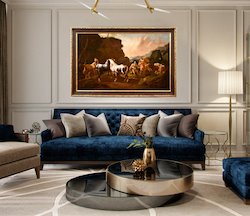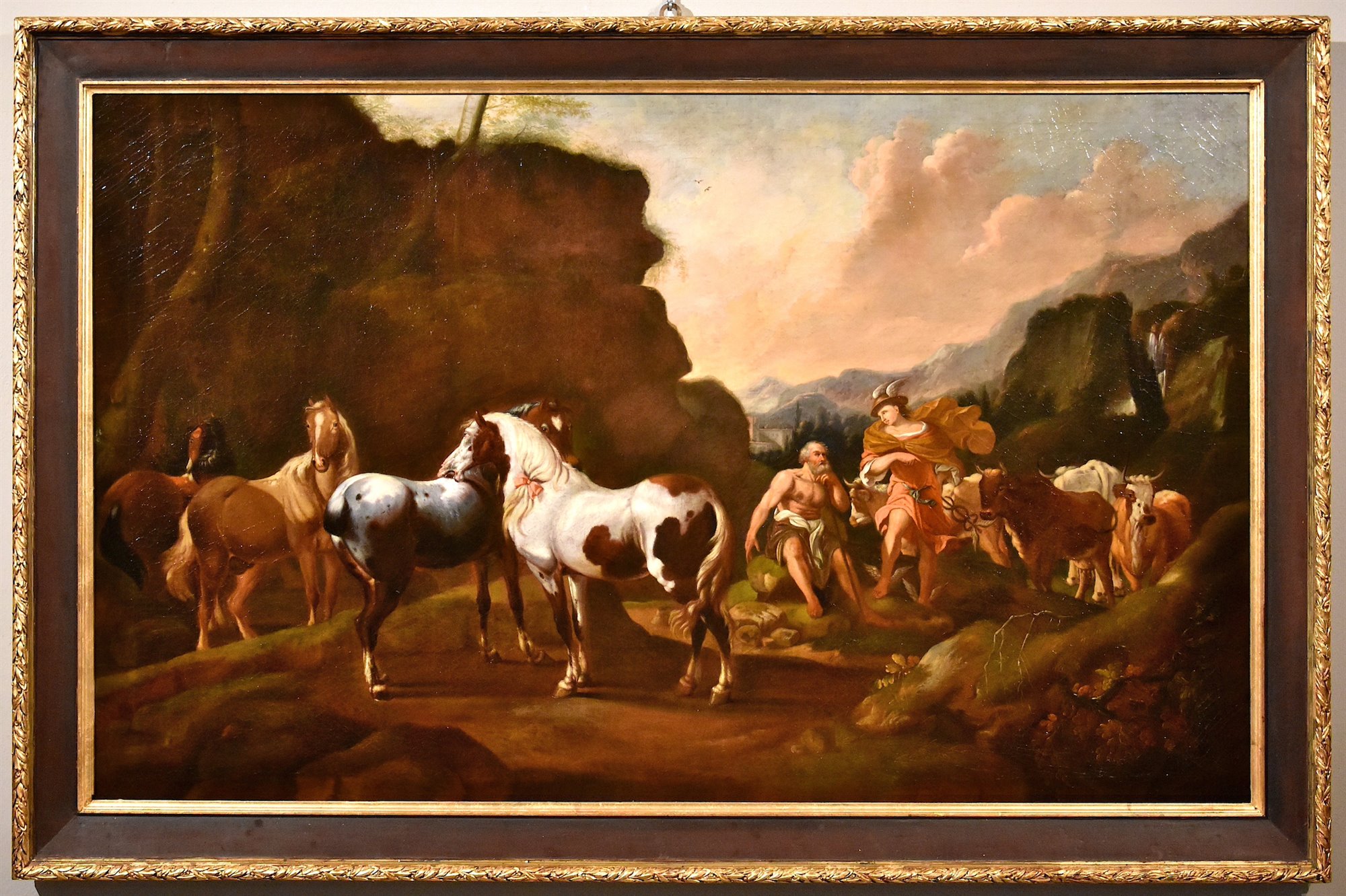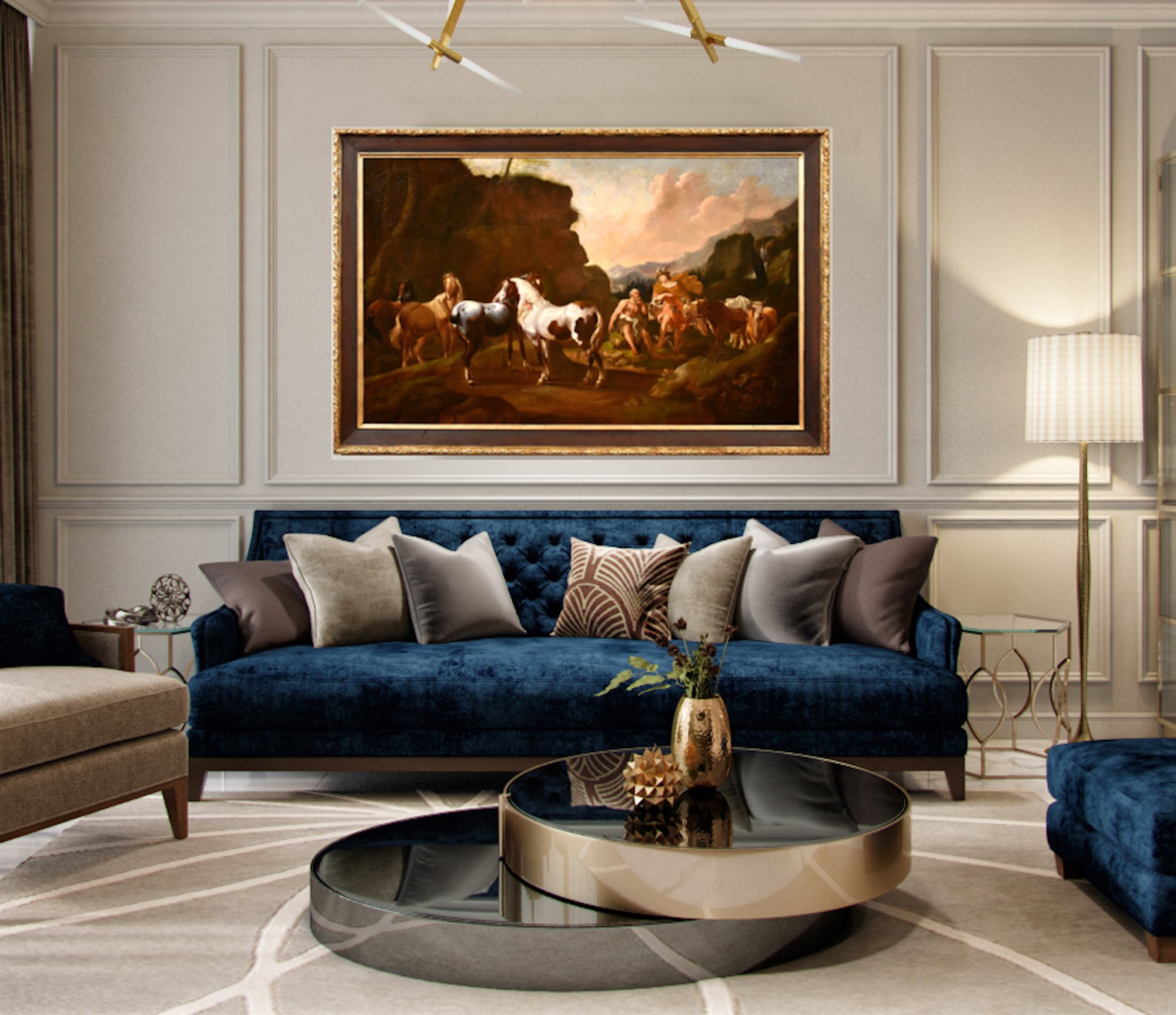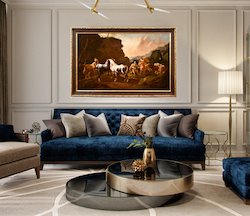Paesaggio con il mito di Mercurio e Batto
Johann Heinrich Roos (Otterberg 1631 - Francoforte 1685)
Johann Heinrich Roos
(Otterberg 1631 - Frankfurt 1685)
Landscape with the myth of Mercury and Batto (from Ovid's Metamorphoses)
Oil painting on canvas
101 x 159 cm.
With frame 115 x 174 cm.


The work represents the mythological episode, taken from Ovid's Metamorphoses (Ovid, Metamorphoses, II, 676-707) which narrates the moment in which the god Mercury, taking advantage of a moment in which Apollo leaves his herd alone, steals some heifers and then hides them in a ravine.
The only witness to the theft is the old Batto, a shepherd in charge of looking after the purebred horses of the rich Neleus, king of Pilo and who, in exchange for a heifer, guarantees the God not to be a spy, swearing to him that he will remain silent as a stone. .
Immediately distrusting his words, Mercury decides to test his honesty: he comes back in front of him with another aspect, asking him if he had seen a herd pass by, and offering him in exchange for this information a bull and a heifer. Batto, who is immediately tempted by this new and more convenient offer, indicates without hesitation where the animals were hidden.
As Ovid well illustrates in his poem 'the Metamorphoses', whoever betrays the trust or benevolence of a God is forced to a bitter fate, and so Batto is transformed by Mercury into a stone, remaining silent for eternity just as he had promised.
The scene represents the moment when Mercury is offering Batto a heifer, which he indicates with his hand, in exchange for his loyalty. The divinity is perfectly recognizable due to his classical attributes, the winged helmet and shoes and above all the caduceus, the winged staff with two twisted snakes, which he will use to transform the shepherd into a stone.
The figurative and exhibition peculiarities of this valuable painting with a mythological subject trace its authorship to Johann Heinrich Roos (Otterberg 1631 - Frankfurt 1685), progenitor of a prolific and illustrious dynasty of painters.
A talented 'animalist' who had spent four years in Italy, from 1650 to 1654, appreciating the works of Italian specialists, such as Castiglione and Scorza, and assimilating profitably from Italianizing landscape architects, in particular Peter Mulier known as the Tempest. Nonetheless, Roos remained tied to his original Nordic-Dutch stylistic code, which he used in the depiction of various animals with a more realistic imprint than his son Philipp Peter, often led to an excessive emphasis on the animals depicted.
The horses on the left of the composition, which play a predominant role as they are placed in the foreground, denote a specific and accurate representation, an indistinguishable sign of the hand of Roos. The general inventiveness also reflects the clear inspiration from the Lazio landscape, with a glimpse of a village behind it, located at the base of the hill on the right, behind the rocky wall.
ADDITIONAL INFORMATION:
The painting is sold complete with a pleasant frame, accompanied by a certificate of authenticity and a descriptive iconographic card.
We take care and organize the transport of the purchased works, both for Italy and abroad, through professional and insured carriers.
Contact us for any information.
It is also possible to see the painting in the Riva del Garda gallery, we will be happy to welcome you to show you our collection of works.
Follow us also on:





